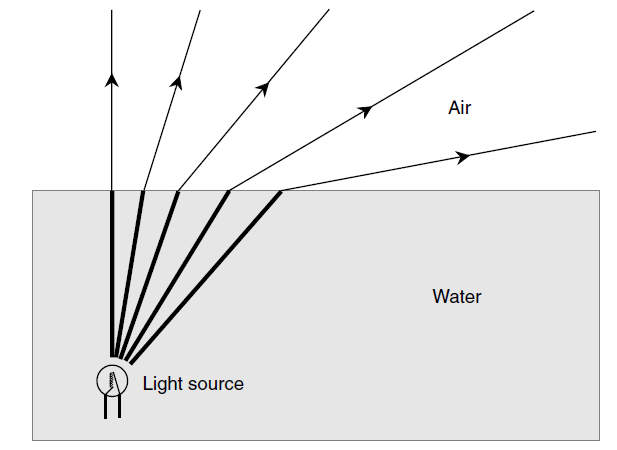
CORPUSCLES OF LIGHT
 المؤلف:
S. Gibilisco
المؤلف:
S. Gibilisco
 المصدر:
Physics Demystified
المصدر:
Physics Demystified
 الجزء والصفحة:
457
الجزء والصفحة:
457
 26-10-2020
26-10-2020
 2273
2273
CORPUSCLES OF LIGHT
The theory of EM-wave propagation is a relatively recent addition to the storehouse of physics knowledge. Isaac Newton, the seventeenth-century English physicist and mathematician known for his theory of gravitation and his role in the invention of calculus, believed that visible light consists of submicroscopic particles. To the casual observer, visible light travels in straight lines through air or free space. Shadows are cast in such a way as to suggest that there are no exceptions to this rule, at least in a vacuum. Today scientists know that light behaves, in some ways, like a barrage of bullets. Particles of EM energy, called photons, have momentum, and they exert measurable pressure on objects they strike. The energy in a beam of light can be broken down into packets of a certain minimum size but no smaller.
However, one need not search hard to find complications with Newton’s corpuscular theory of the nature of light. At a boundary between air and water, photons do inexplicable things. Ask any child who has ever stuck a fishing pole into a lake or who has looked into the deep end of a swimming pool and seen 4 m of water look like 1 m. Photons change direction abruptly when they pass at a sharp angle from water to air or vice versa (Fig. 1), but there is no apparent force to give them a sideways push. When light passes through a glass prism, things get stranger still; not only are light beams bent by the glass, but the extent to which they are bent depends on the color!

Fig. 1. If light rays consist of particles, what pushes them sideways at the water surface?
 الاكثر قراءة في الضوء
الاكثر قراءة في الضوء
 اخر الاخبار
اخر الاخبار
اخبار العتبة العباسية المقدسة


